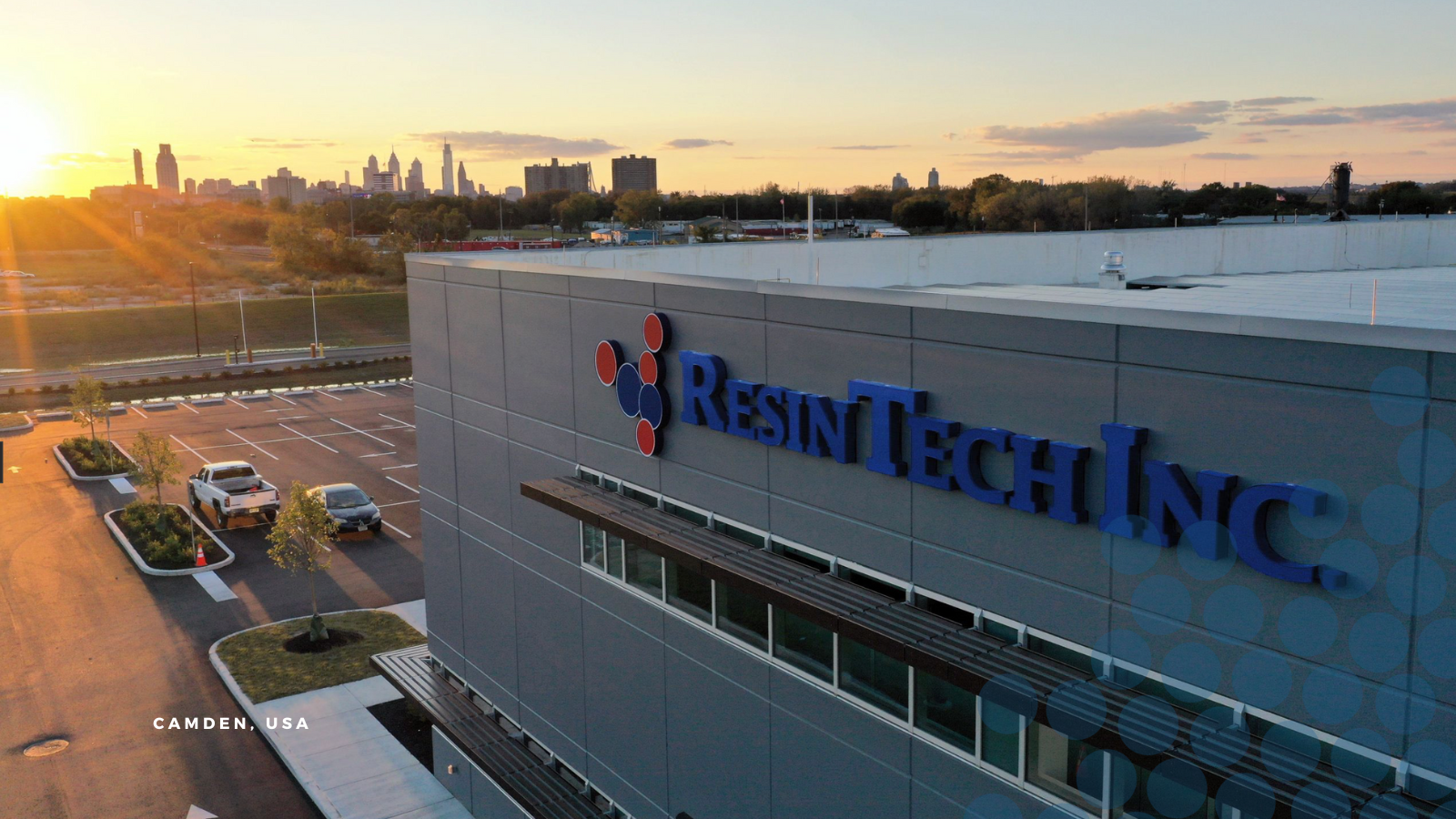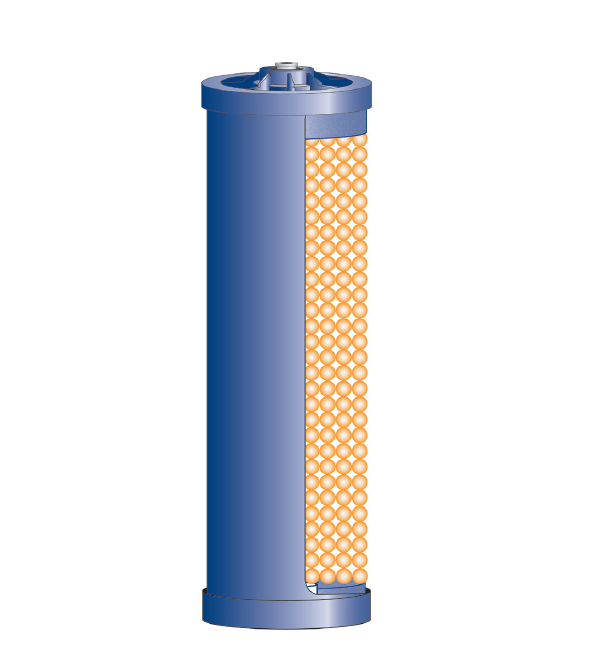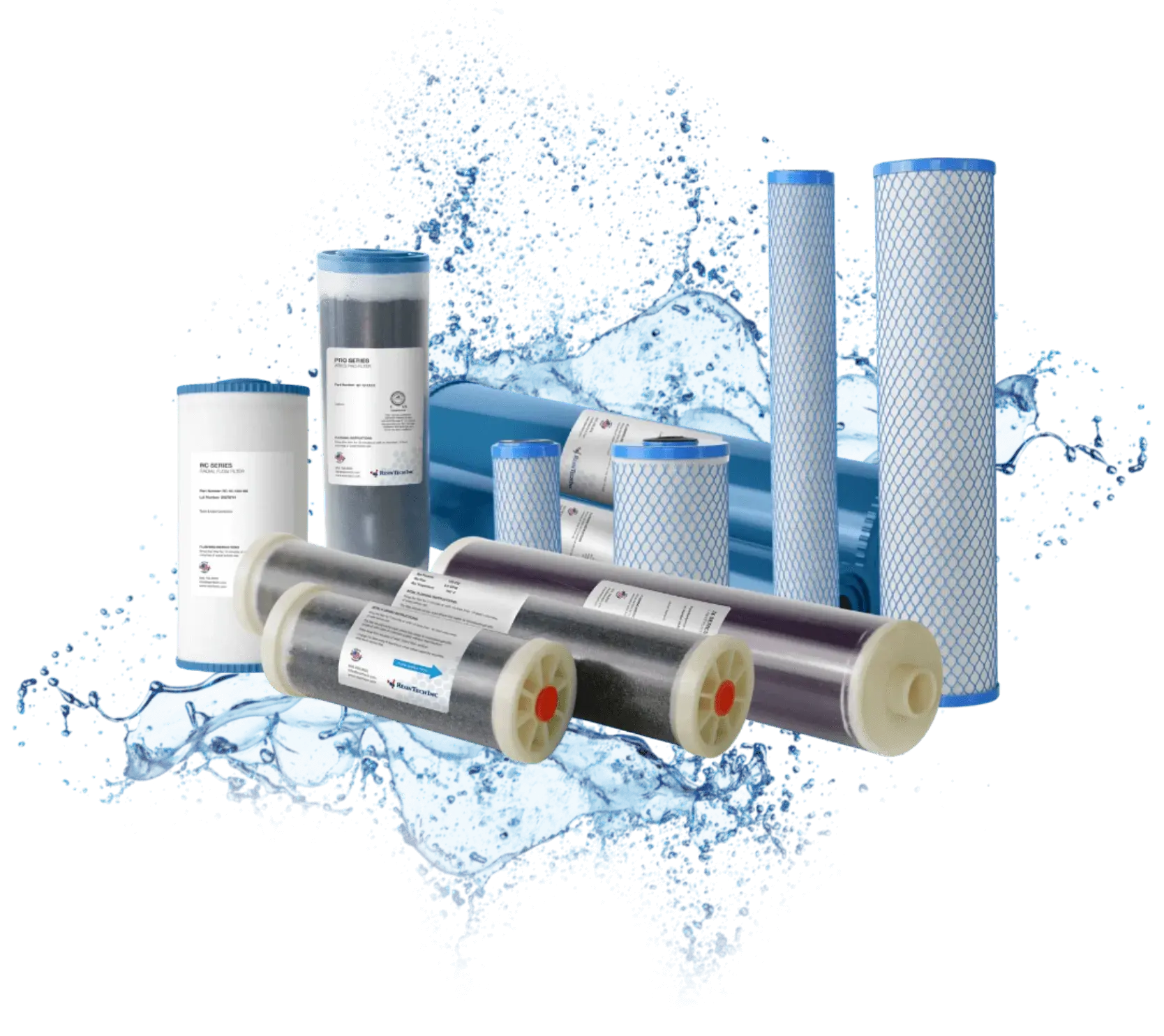OEM Filter Design Considerations
After interviewing Bailey Rau, Product Development and Manufacturing Engineer at ResinTech, about designing water filters we prioritize some...
5 min read
Byron Druss : Sep 5, 2025 4:13:10 PM

When OEMs require water filters as part of critical applications like cooling loops, hydrogen generation systems, medical lasers or perhaps dental equipment, engineers must look beyond just designing to performance specifications. Supply chain resiliency, cost of goods and quality control can seriously impact the business. And since most filter manufacturers merely assemble components from multiple suppliers, creating quality variables and adding costs that impact your project timeline, budget and supply, look for vertically integrated filter makers.
Avoiding the Hidden Costs of Traditional Filter Manufacturing
Traditional filter manufacturers usually source plastic housings from one supplier, media from another, and end caps from a third. Each handoff introduces markup costs, quality variation, and sourcing complexities. When your cooling system or medical device requires consistent filtration performance, these variables become engineering and supply risks.
Even more importantly, filter design requires intimate knowledge between the relationship of the media’s performance, the filter’s length and diameter and the flow of water. Ensuring its intended performance, doing breakthrough analysis to determine filter life, all while not gold-plating the design, may require lab validation. Filter manufacturers without the repeated design experience, scientific personnel and lab facilities cannot possibly deliver a component as well made.
These factors can cause longer lead times, higher costs, and less control over critical specifications like bed volume and contact time.
How Vertical Integration Solves These Challenges
Vertical integration means one facility controls manufacturing and complete design, down to each component and process. The same team that extrudes your filter housing also produces the ion exchange resin or activated carbon inside it. This approach eliminates several production scheduling challenges, reduces cost of manufacturing and improves the reliability of performance and availability that multi-supplier manufacturers cannot provide.
Here's what this means for your projects:
Cost Predictability: Making each component and assembling in one place eliminates multiple distributor markups and steadies pricing predictability for your filtration components. Transportation costs between suppliers are eliminated, further reducing the cost of goods.
Quality Consistency: Vertical manufacturers own the entire quality process, responsible and able to adjust for each portion of the process. When the same quality systems control plastic extrusion, cap molding, screen application and media production, performance is most consistent across filter batches. This matters when your system requires specific pressure drop characteristics or contaminant removal rates and tolerances mean something.
Faster Customization: Vertically integrated manufacturers are set up for the most rapid designs and modifications. When a specific bed volume or media fill is required vertical integration allows rapid adjustments without coordinating between multiple suppliers.
Supply Chain Reliability: Single-source manufacturing reduces the risk of component shortages that could impact not only your product launch but manufacturing production and consumable replacement capabilities.
The Made in USA Advantage
The benefits of manufacturing in the United States go well beyond vertical integration. Domestic production means shipping distances are shorter, logistics are simplified, increased accessibility within nearby time zones, much lower tariff impacts and better communication during the design phase.
When requiring certifications or regulatory compliance, US manufacturing often simplifies the documentation and approval process. When your medical laser or water treatment system needs to meet specific standards, domestic manufacturing provides a clearer regulatory pathway while collaborating within the same or nearby time zones.
Engineering Impact on Your Applications
Here are a few examples of how vertical integration benefits based on your application:
Cooling Systems: Often needing deionization, consistently performing filters prevent fouling that could compromise heat transfer efficiency. Integrated manufacturing ensures your specified flow rates and pressure drops are stable across production runs. For critical applications, breakthrough analysis helps anticipate filter life to maintain healthy, active systems.
Medical Devices: When protecting expensive laser components or ensuring patient safety, quality control becomes critical. Single-facility manufacturing provides better traceability across assembly, even down to the component level, with quality documentation, too.
Laboratory Equipment: Deionization and high-purity applications require precise media specifications, at times requiring multiple treatment stages. Vertical integration allows better control over resin quality and filter construction details. This is especially attractive if the manufacturer has direct experience with Type 1, also known as Ultrapure, Type 2 or 3 grade water.
Hydrogen Generators: Electrolysis is required in the separation of water to yield hydrogen. Impurities can affect the quality of the generator. This requires Deionized Water, often achieved with properly designed filtration systems and their filters. Vertical integration, of not only the filters but the purification system, provides the best results.
Making the Right Filter Partnering Decision
When partnering with a filter supplier, consider how their manufacturing approach impacts your engineering and business requirements. Multi-supplier assembly may initially seem cost-effective, but hidden costs in quality variation, sub-component lead times, layered markups, transportation costs and customization difficulties far outweigh the apparent savings.
Vertical integration offers a different approach: predictable costs, consistent quality, and the flexibility to meet specific application requirements. For engineers designing systems where filtration performance directly impacts product reliability, this manufacturing strategy provides mandatory advantages for thos striving for competitive advantages.
The key is to match your sourcing strategy to your application's criticality. When filter failure affects mean-time-between-failure (MTBF), downtime, customer complaints, or safety risks, vertical integration's quality and reliability benefits often justify the decision to partner with a specialized vertically integrated manufacturer.
ResinTech not only makes their products in the U.S.A. but is also the only vertically integrated manufacturer of filters and lab water purification systems in the world. Whether off the shelf-sourcing or requiring custom engineering, support teams with staff members help you meet and exceed your required performance specifications. ResinTech’s in-house laboratory and product design specialists provide the depth of design as well. From ion exchange resin to welding screens, injection molding end caps, filter body extrusion and assembly, in fact the entire end-to-end process, ResinTech is ready to be your best partner.
Frequently Asked Questions
Q: How does vertical integration reduce costs compared to traditional filter manufacturing?
A: Vertical integration eliminates multiple distributor markups that occur when components move between suppliers. Transportation costs between facilities are entirely removed. You also avoid the coordination overhead costs that traditional manufacturers build into their pricing. This typically results in 20-60% cost savings compared to multi-supplier assembly, in addition to subsequent business impacts of quality and supply.
Q: How are lead times affected for custom filters from a vertically integrated manufacturer?
A: Lead times are significantly shorter because there's only one partner, without coordination between multiple suppliers. Modifications like different bed volumes, custom media fills, or housing materials can often be completed much more quickly, too. Complex custom designs are typically reduced by several weeks versus traditional manufacturers who must work with multiple component suppliers.
Q: What’s the impact on quality control when everything is made in one facility?
A: Single-facility manufacturing not only allows consistent quality systems across each production step, but the media quality, the key component, is tightly controlled. This applies to plastic extrusion, injection molded parts, screening, media production, and final assembly. The result is a better batch-to-batch consistency and easier traceability should issues arise. You get much easier problem resolutions and can adapt with design changes, new offerings and continued replacements.
Q: Can vertically integrated manufacturers handle both small prototype quantities and large production runs?
A: Since all manufacturing processes are in-house, production can scale up or down without coordinating with external suppliers. Small prototype runs don't require significant minimum order quantities that otherwise would occur from multiple vendors. Large production runs can be more easily and reliably scheduled with blanket orders incorporating delivery dates. The benefit from streamlined processes and consistent capacity planning across all manufacturing steps makes for better business.
Q: What certifications and standards can be maintained with vertical integration?
A: Most often, vertical integration makes it easier to maintain certifications because all processes are under one quality system. Certifications can be part of the supplied process when designing filters with experienced vendors. Common certifications include NSF for drinking water applications, ISO and FDA compliance for medical device applications. Single-facility manufacturing reduces audit process complexities and yields much of the documentation requirements for regulatory compliance.
Want to learn more about the ins and outs of water treatment? Subscribe to this blog and we'll keep you posted.

After interviewing Bailey Rau, Product Development and Manufacturing Engineer at ResinTech, about designing water filters we prioritize some...

If you're working with ion exchange resin filters, you've probably wrestled with the age-old question: should I go wider or longer? I've seen...

Ultrapure lab water(UPW) is like a lab's clean room, but in liquid form. At 18 MΩ-cm resistivity, Type I water isn't just "really clean"—it's so pure...

If you're working with ion exchange resin filters, you've probably wrestled with the age-old question: should I go wider or longer? I've seen...

After interviewing Bailey Rau, Product Development and Manufacturing Engineer at ResinTech, about designing water filters we prioritize some...

Ultrapure lab water(UPW) is like a lab's clean room, but in liquid form. At 18 MΩ-cm resistivity, Type I water isn't just "really clean"—it's so pure...